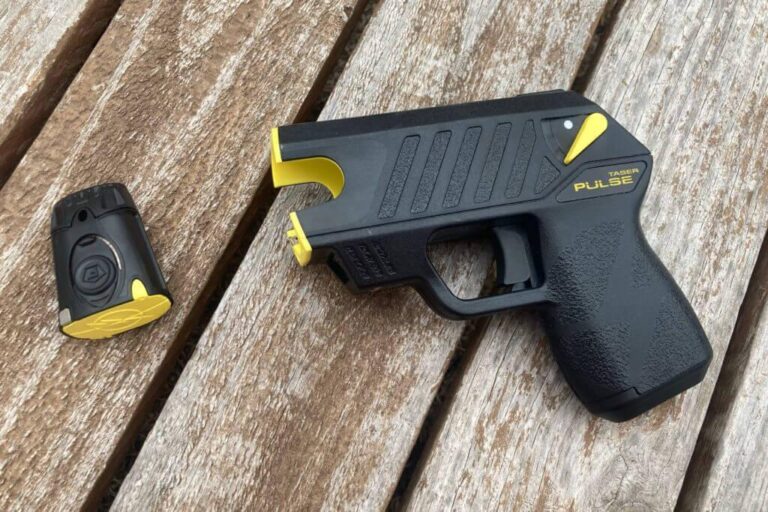Table of Contents
- Understanding the Root Causes of Stun Gun Trigger Misfires
- Routine Maintenance Practices to Prevent Trigger Failures
- Step-by-Step Troubleshooting Guide for Common Misfire Issues
- Expert Tips for Enhancing Stun Gun Trigger Reliability and Safety
- Final Thoughts
Understanding the Root Causes of Stun Gun Trigger Misfires
Trigger misfires in stun guns often stem from a few critical issues that affect their performance and reliability. Battery depletion is among the most common causes, as insufficient power prevents the device from delivering the necessary electric charge. Furthermore, internal component wear-such as corroded contacts or damaged wiring-can disrupt the electrical circuit, resulting in inconsistent trigger response. Environmental factors like moisture or dirt buildup inside the trigger mechanism also play a significant role in interference, leading to erratic or failed activations.
Another frequent culprit involves the design and manufacturing tolerances of the trigger itself. Over time, parts may loosen or degrade, causing misalignment that affects the smooth operation of the trigger switch. Additionally, user handling practices, including dropping the device or improper cleaning, exacerbate these underlying issues. Keeping these root causes in mind not only helps in diagnosing the problem but also guides users towards precise maintenance techniques and timely part replacements.
- Battery health check: Ensure power sources are fresh and correctly installed.
- Regular cleaning: Prevent accumulation of grime and moisture affecting contacts.
- Inspect triggers for wear: Replace components showing signs of corrosion or damage.
- Proper storage: Keep the stun gun in a dry and stable environment to avoid environmental damage.
Routine Maintenance Practices to Prevent Trigger Failures
Keeping your stun gun in top working condition dramatically reduces the chances of trigger malfunctions. Regularly clean the trigger area and internal components with a soft brush or compressed air to remove dust, dirt, and any residue from prior use. Pay close attention to the contacts and moving parts, ensuring they remain free from corrosion or buildup that could impede smooth operation. Applying a light, non-conductive lubricant can also enhance trigger responsiveness, but be cautious to avoid excessive use, which might attract debris.
Implementing a consistent maintenance schedule includes:
- Inspecting the trigger mechanism for signs of wear or damage before and after use.
- Charging the battery fully and storing the device in cool, dry conditions to prevent moisture-related issues.
- Testing the device periodically, following manufacturer guidelines to confirm reliable trigger function.
By incorporating these simple yet effective habits, you’ll extend the lifespan of your stun gun and minimize unexpected misfires that could compromise your safety.
Step-by-Step Troubleshooting Guide for Common Misfire Issues
If your stun gun is misfiring or failing to trigger correctly, start by ensuring the battery is fully charged or replaced if necessary. A common culprit behind misfires is insufficient power supply, which can lead to inconsistent electrical discharge. Next, carefully inspect the trigger mechanism for any dirt, debris, or signs of wear. Cleaning the trigger with a soft brush or compressed air can restore its responsiveness. Always check the connection points where the trigger meets the electrical contacts, as corrosion or loose wiring can impede performance. Regular maintenance of these components significantly reduces the chance of malfunction.
Additionally, verify that the stun gun is properly secured in its holster or casing, as a loose fit can cause accidental disconnections. Test the trigger multiple times after cleaning to confirm smooth operation. If misfires persist, consider disassembling the trigger assembly to look for internal obstructions or broken springs that might require replacement. Never use excessive force when handling the trigger parts to avoid causing further damage. By following these carefully outlined steps, you can quickly identify and resolve most common trigger issues without professional intervention, ensuring your stun gun remains reliable when it counts.
Expert Tips for Enhancing Stun Gun Trigger Reliability and Safety
Maintaining a stun gun’s trigger functionality is crucial for ensuring it performs flawlessly when needed most. One fundamental approach is to regularly clean the trigger mechanism to prevent dust, debris, or moisture build-up, which can interfere with its responsiveness. Use a soft brush or compressed air to gently remove particles from the trigger area without damaging the internal components. Additionally, applying a light, non-corrosive lubricant designed for electronic devices can help keep the trigger moving smoothly but avoid over-lubrication, which might attract dirt and exacerbate misfires.
Safety can be further enhanced by implementing simple but effective practices. Always test the stun gun in a controlled environment following the manufacturer’s instructions to ensure the trigger is engaging correctly without hesitation. Consider these expert tips for reliable triggering:
- Inspect wiring and connectors periodically for any signs of wear or corrosion.
- Replace worn or damaged trigger components promptly to avoid malfunction.
- Store the device in a dry, temperate place to prevent moisture-related issues.
- Use protective covers or cases that do not obstruct the trigger, reducing accidental pulls.
Final Thoughts
In conclusion, understanding the common causes behind stun gun trigger misfires is the first step towards maintaining reliable performance. By regularly inspecting your device, keeping it clean, and ensuring proper battery care, you can easily prevent and fix most trigger issues without professional help. Remember, a well-maintained stun gun not only protects your investment but also ensures your personal safety when you need it most. Stay proactive with these simple tips, and you’ll keep your stun gun firing strong whenever it counts.Check Our Other Blogs
- StunGun – Your Trusted Source for Stun Guns, Laws, and Self-Defense Tips
- PepperSprayLaws – Your Trusted Resource for Pepper Spray Information
- StunGunLaws – Your Trusted Guide to Stun Gun Legality and Safety





